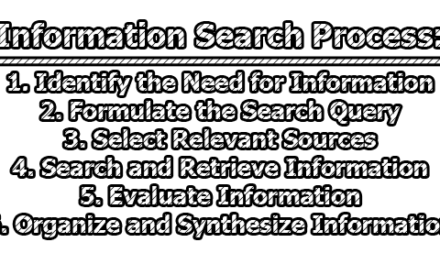Prioritizing Archival Materials for Digitization:
Digitizing archival materials is a multifaceted and resource-intensive endeavor, demanding meticulous planning and prioritization. Archival collections are treasure troves of diverse, valuable, and often fragile materials that serve both as historical records and educational resources. To ensure the efficient and effective digitization of these materials, it is crucial to make informed decisions regarding which items to digitize first. This article will explore prioritizing archival materials for digitization, taking into account the specific goals, resources, and audience of your institution.
1. Define Your Digitization Objectives: Before commencing the digitization process, it is essential to establish clear objectives. Common objectives include preserving original materials, enhancing access and visibility, improving discoverability, supporting research and education, and generating revenue. These objectives will guide decisions about the scope, quality, and standards of the project, as well as expected outcomes.
2. Assess Your Available Resources: Effective digitization requires a thorough assessment of available resources. This includes evaluating the number and characteristics of archival materials, the requisite equipment and storage space, as well as the availability of funds and skilled personnel. Determining the feasibility and potential risks associated with digitization is crucial.
3. Identify Your Target Audience: Digitizing archival materials serves not only as a preservation strategy but also as a means of communication. Identifying your target audience and understanding their needs, preferences, and interactions with your institution is vital. Consider factors like their backgrounds, interests, and the formats they prefer. This knowledge will facilitate the design, delivery, and evaluation of your digital collections.
4 . Apply Selection Criteria: After establishing your digitization objectives, evaluating available resources, and identifying your target audience, you can apply selection criteria to prioritize materials.
Common selection criteria include:
- Significance: The historical, cultural, social, or intellectual value of materials. Significance is a pivotal criterion, and materials that hold profound importance in these domains should be considered high-priority candidates for digitization. For example, documents related to pivotal historical events, influential cultural figures, or groundbreaking intellectual work fall under this category.
- Demand: Current or potential interest, usage, or requests for materials. The demand for specific materials, whether due to ongoing research, educational needs, or public interest, is a compelling criterion. Identifying the materials that users actively seek can help ensure that digitization efforts are aligned with immediate needs.
- Condition: The physical state, deterioration, or damage of materials. Materials that are in poor condition or deteriorating rapidly should be prioritized to prevent further loss. Fragile documents or objects that risk deterioration should be digitized early to preserve their content.
- Rarity: The uniqueness, scarcity, or exclusivity of materials. Rare and unique materials often hold significant research or historical value. Digitizing such materials can provide access to content that may not be available elsewhere, making them a high-priority choice.
- Completeness: The extent, coverage, or coherence of materials. Collections that are incomplete or lack coherence may benefit from digitization to improve their usability. For instance, digitizing a scattered collection of letters can make it more accessible and meaningful to researchers.
- Compatibility: Suitability for digitization equipment, software, or standards. Materials that are easily adaptable to digitization processes can be prioritized to streamline the workflow. Compatibility ensures efficient digitization and reduces the need for specialized equipment or software, which can be costly and time-consuming.
Assigning Weights to Selection Criteria:
Once you have identified these selection criteria, the next step is to assign weights to them based on their importance and relevance to your specific digitization project. The weighting process helps establish a systematic approach for prioritization. To assign weights, consider the following:
- Establish a Scoring System: Develop a numerical scoring system for each criterion. For example, you can use a scale of 1 to 5, with 1 indicating low importance and 5 indicating high importance.
- Consider Project Goals: Reflect on the overarching goals of your digitization project. If the primary goal is preservation, then criteria like condition and rarity might carry more weight. If the primary goal is to support current research, then demand and completeness might be more critical.
- Engage Stakeholders: Gather input from relevant stakeholders, including archivists, curators, researchers, and users. Their perspectives can provide valuable insights into the importance of each criterion.
- Collaborative Decision-Making: Encourage collaborative decision-making within your institution to ensure that the weighting process is comprehensive and unbiased. This collaborative approach can also help in achieving consensus on the weights assigned to criteria.
- Regular Review: Periodically review and adjust the weights assigned to selection criteria to adapt to changing project goals or priorities.
By assigning weights to the selection criteria based on their importance in the context of your digitization project, you create a structured and systematic approach to prioritize materials. This approach ensures that your digitization efforts are in alignment with your goals and resources, ultimately leading to a more efficient and effective digitization process.
5. Implement Prioritization Methods: With selection criteria in place, various prioritization methods can be employed to manage digitization activities efficiently:
- Batch Processing: Batch processing involves grouping similar materials together for streamlined digitization. This method is particularly useful when you have a large number of similar items, such as photographs or documents of the same type. Batch processing is effective when you want to maintain a consistent workflow and minimize equipment setup changes. It’s ideal for projects where you have many materials with similar characteristics.
- Phased Approach: The phased approach involves digitizing materials in stages, with a focus on addressing the most critical items first. This method allows you to prioritize materials based on their significance or urgency. Use the phased approach when you have limited resources or need to quickly make high-value materials accessible. This method is particularly suitable for projects with a mix of materials, where some items are more critical than others.
- Pilot Project: A pilot project entails testing the digitization process on a small sample of materials before proceeding with full-scale implementation. This method helps identify potential issues and refine workflows. A pilot project is advisable when you’re dealing with unique or fragile materials, or when you’re implementing a new digitization process. It allows you to assess feasibility and identify challenges early on.
- User-Driven Digitization: User-driven digitization involves prioritizing materials based on user requests and interests. This approach ensures that digitized content aligns with the needs of your audience. Consider user-driven digitization when you want to engage your audience actively and provide materials that are in demand. It’s especially valuable in academic and research settings where users have specific requests.
- Collaborative Digitization: Collaborative digitization involves partnering with other institutions or organizations to share resources and expertise. This method can be advantageous for pooling resources and accessing specialized equipment or knowledge. Collaborative digitization is a suitable approach when you lack specific resources or expertise and can benefit from collaborating with other institutions. It’s particularly useful for institutions with limited budgets.
Choosing the Appropriate Method: Selecting the right prioritization method depends on the specific goals and requirements of your digitization project. Consider the following factors when making your choice:
- Project Goals: Review your project’s objectives. If preservation is your primary goal, a phased approach might be best. If increasing accessibility is the priority, consider user-driven digitization.
- Resource Availability: Assess your available resources, including staff, equipment, and funding. Some methods may be more resource-intensive than others.
- Material Characteristics: Take into account the nature and diversity of your archival materials. Some methods are better suited for handling similar items, while others can accommodate a range of materials.
- Urgency and Demand: Prioritize materials that have high demand or are urgently needed by researchers or the public.
- Collaborative Opportunities: Explore whether collaboration with other institutions can help you achieve your goals more efficiently.
By carefully considering these factors, you can select the prioritization method that best fits your project’s unique requirements, ensuring that your digitization efforts are both effective and efficient.
6. Evaluate and Revise Your Priorities: Digitization is an ongoing, dynamic process. Regular evaluation and revision of priorities are imperative. To assess the effectiveness of your efforts, you can employ methods such as surveys, interviews, analytics, audits, and reviews. Feedback from users and consultation with professional guidelines or best practices will also inform your ongoing digitization priorities.
In conclusion, prioritizing archival materials for digitization is a crucial step in the preservation, accessibility, and usability of invaluable historical and cultural resources. By defining clear objectives, assessing available resources, understanding your target audience, applying selection criteria, implementing prioritization methods, and continually evaluating and revising priorities, institutions can ensure that their digitization projects are efficient, effective, and tailored to the needs of current and future users. This approach not only preserves the past but also makes it accessible and relevant for generations to come.

Library Lecturer at Nurul Amin Degree College










